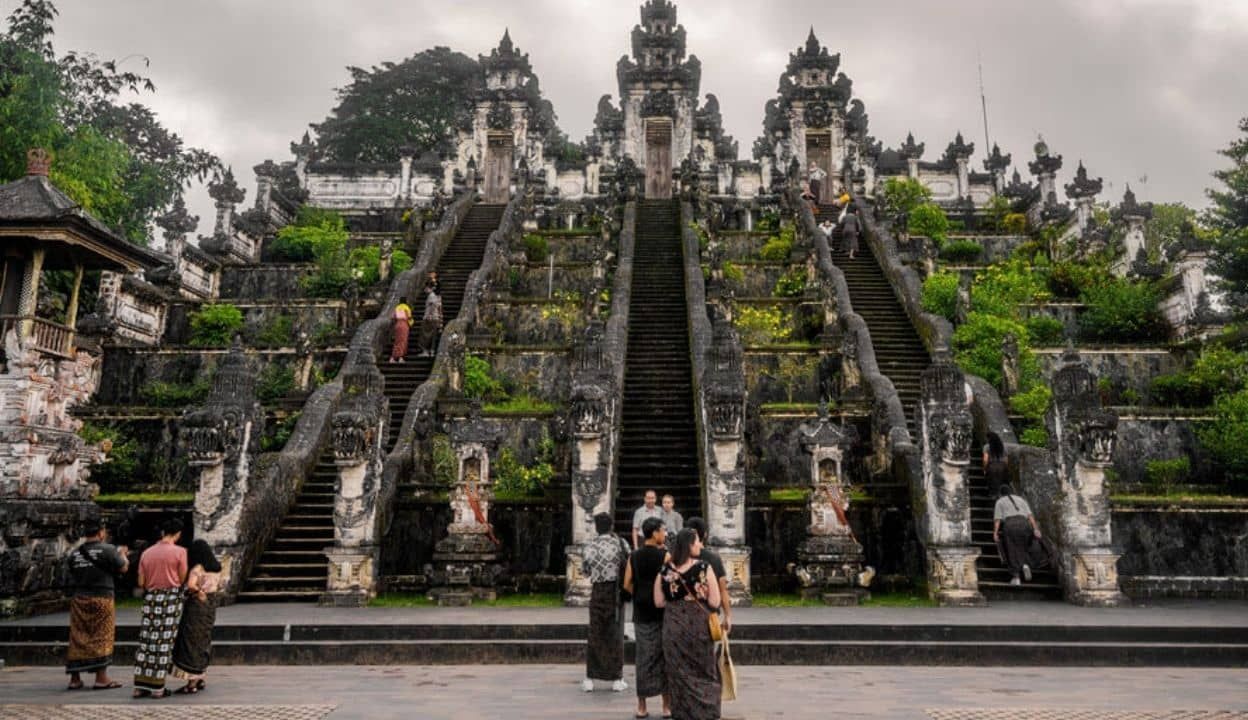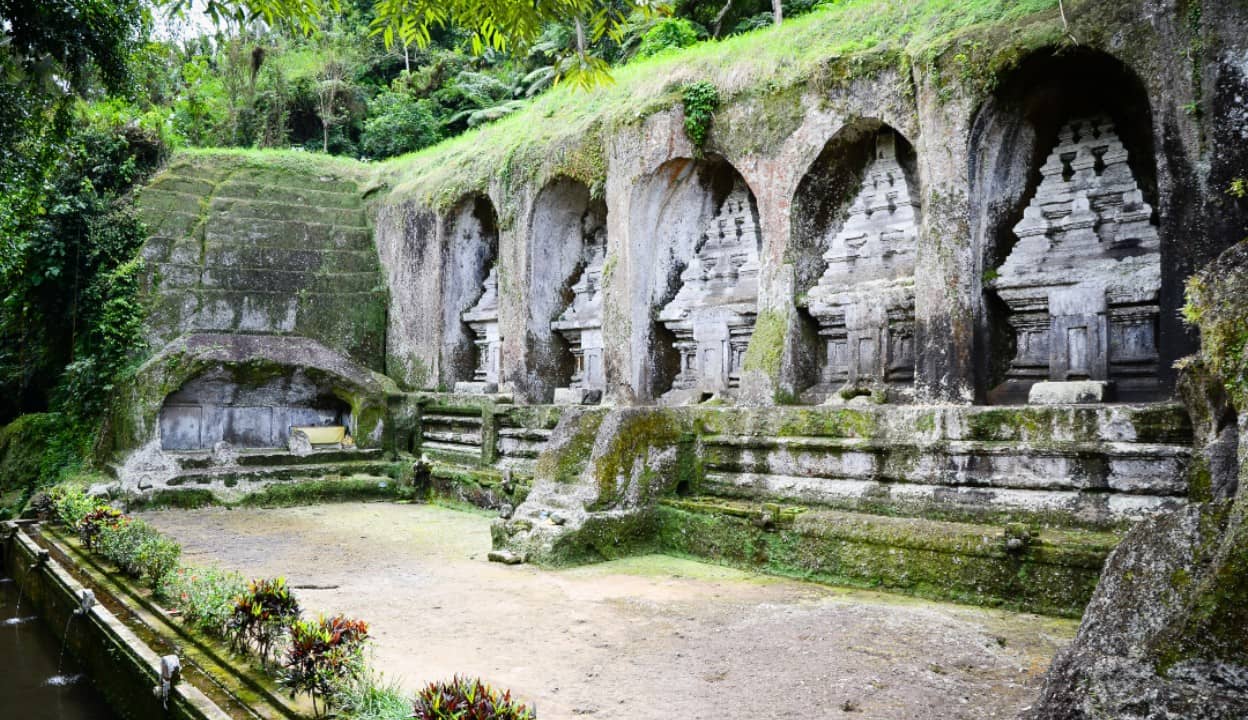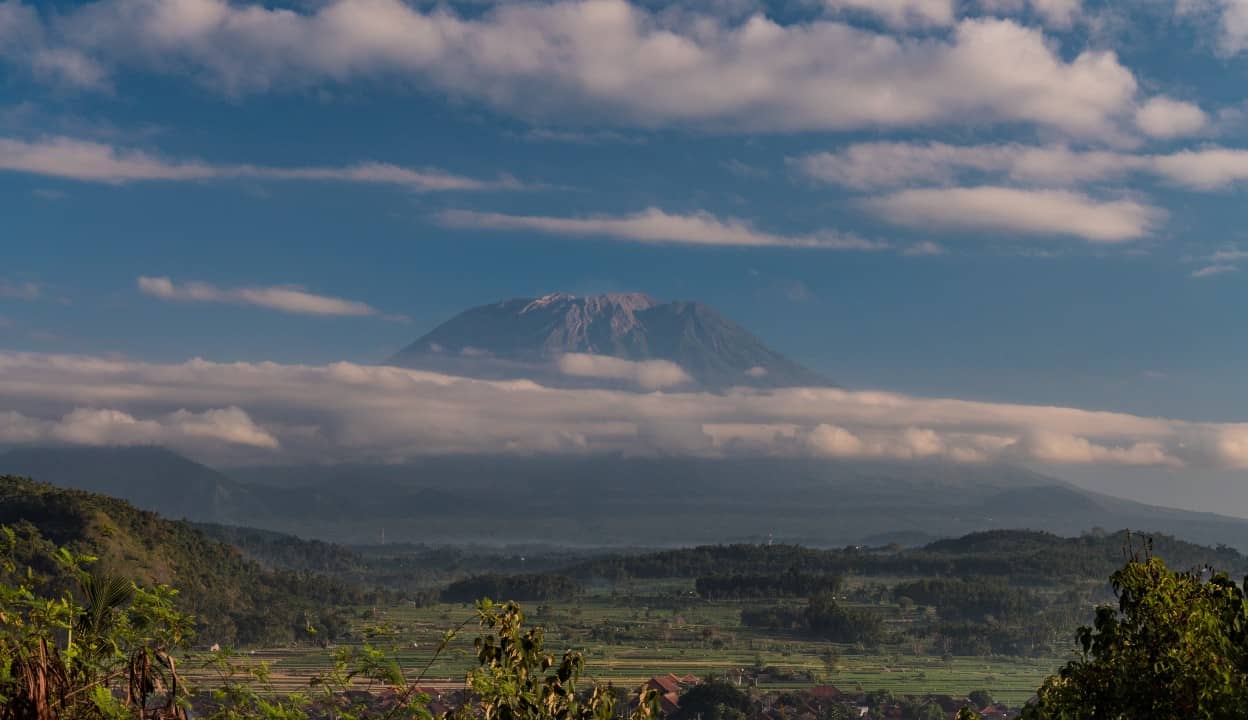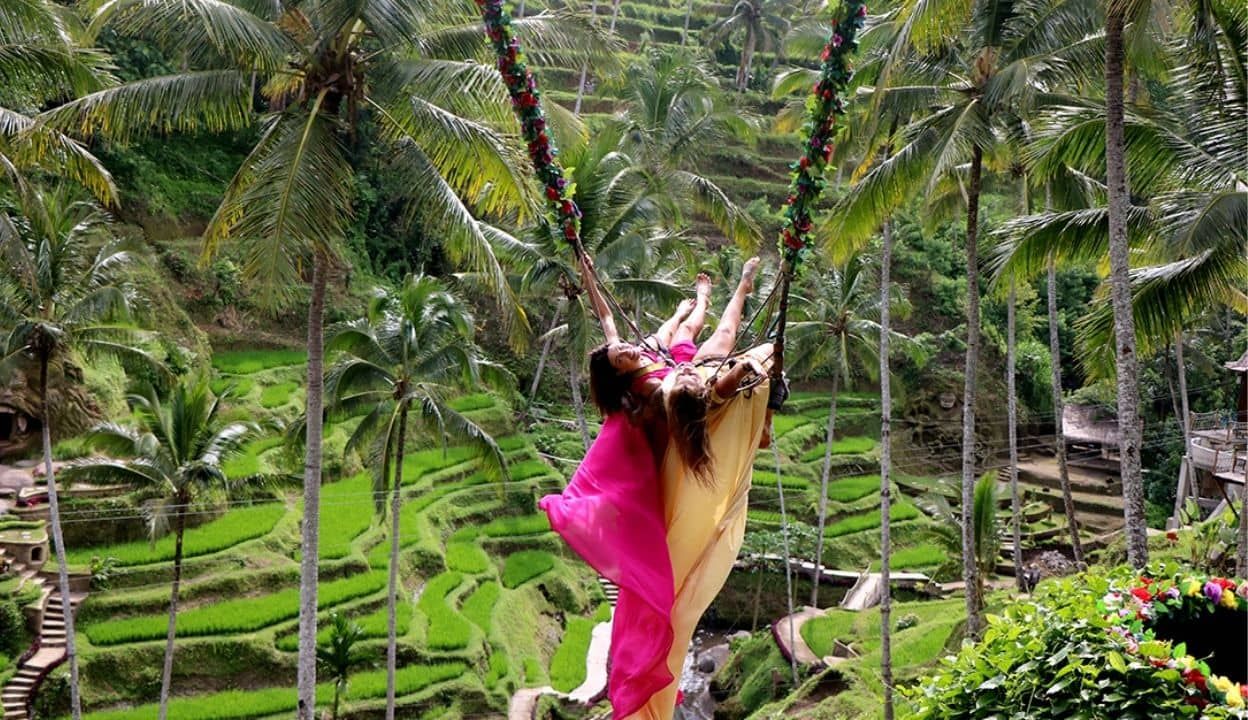Lempuyang Temple - A Journey to the Gates of Heaven in Bali
Info
Lempuyang Temple (Pura Luhur Lempuyang) is one of the oldest and most sacred Hindu temples in eastern Bali. The temple is famous for its "Gates of Heaven", offering a stunning view of Mount Agung, one of Bali’s most iconic sights. Lempuyang holds deep significance in Balinese Hinduism, and pilgrims come to pray and offer worship at this sacred site. Visitors must ascend hundreds of steps to reach the temple, symbolizing a spiritual journey. The temple is both a popular tourist attraction and a revered religious site.
Description
Lempuyang Temple, also known as Pura Luhur Lempuyang, is one of Bali’s oldest and most revered temples, renowned for its stunning location atop Mount Lempuyang in East Bali. Often referred to as the “Gateway to Heaven,” this sacred site offers visitors not only breathtaking panoramic views but also a deep sense of spiritual significance. The temple is part of the Sad Kahyangan Jagad, six sanctuaries considered the most holy places of worship on the island, making it a vital destination for those seeking spiritual enrichment, cultural insight, and unforgettable natural beauty.
A Sacred Pilgrimage Through Bali’s Spiritual Landscape
Located at an altitude of approximately 1,175 meters above sea level, Lempuyang Temple is not just a single temple but a complex of seven temples scattered along the slopes of Mount Lempuyang. The main temple, Pura Luhur Lempuyang, is perched at the highest point and requires a pilgrimage-like journey of over 1,700 steps through lush tropical forests and breathtaking landscapes. The journey itself is considered an act of devotion, allowing visitors to cleanse their spirits and experience the serene natural beauty of Bali away from the island’s more crowded tourist spots.
As you ascend, you pass through thick jungle, traditional Balinese villages, and terraced rice fields, each stage offering a unique perspective of the island’s landscape. Along the way, you’ll encounter the other smaller temples, each with its own distinct atmosphere and set of offerings, providing a sense of progression both physically and spiritually.
The Iconic Gates of Heaven
One of the most captivating features of Lempuyang Temple is its iconic “Gates of Heaven” (Candi Bentar), which perfectly frame the majestic view of Mount Agung, Bali’s highest and most sacred volcano. This view, especially on a clear day, creates a stunning visual illusion, as if you are peering into another world. The gates have become a symbolic and highly photographed landmark, drawing visitors from around the globe seeking to capture the perfect image of Bali’s natural and spiritual beauty.
The Gates of Heaven are not merely a photogenic spot; they serve as a powerful symbol of the temple’s role as a portal between the human and divine realms. According to Balinese beliefs, the gates are a threshold between the earthly world and the spiritual world, inviting worshippers and visitors alike to reflect on their connection to the universe.
A Spiritual Sanctuary High Above the Clouds
Lempuyang Temple is deeply rooted in Balinese Hinduism and is considered a place of great spiritual power. The temple is dedicated to Ida Betara Hyang Iswara, the guardian of the east, and plays a crucial role in maintaining the spiritual balance of the island. For centuries, locals have made the arduous climb to Lempuyang Temple to make offerings, seek blessings, and perform rituals designed to cleanse the spirit and restore harmony.
The temple complex is rich with symbolism and traditional architecture, showcasing intricately carved stone statues of dragons and deities that guard the stairways and temple gates. These sacred statues not only add to the temple’s mystique but also represent the eternal battle between good and evil, a core theme in Balinese Hindu culture.
The spiritual atmosphere of Lempuyang is palpable, especially in the early morning when the temple is often shrouded in mist, creating an otherworldly and almost ethereal ambiance. The sounds of prayer chants, the scent of incense, and the gentle rustle of leaves in the wind contribute to a profound sense of peace and introspection that permeates the temple grounds.
A Journey of Reflection and Resilience
Climbing to Lempuyang Temple is more than just a physical challenge; it’s an act of spiritual discipline and personal reflection. The journey up the steep steps is traditionally seen as a way to cleanse oneself of negative energies and to approach the temple in a purified state. Along the way, visitors are encouraged to respect the local customs, maintain a peaceful demeanor, and embrace the journey as a form of meditation.
The temple complex itself is a place where time seems to stand still. The quiet, broken only by the occasional sound of prayer bells or the call of birds, offers a stark contrast to the fast pace of modern life. For many visitors, the ascent becomes a metaphor for overcoming personal challenges, finding inner strength, and reaching new spiritual heights.
Breathtaking Panoramic Views
Lempuyang Temple’s elevated position offers unparalleled views of Bali’s eastern coast, stretching from the lush green forests below to the azure waters of the ocean in the distance. On clear days, the sight of Mount Agung rising majestically above the clouds is truly awe-inspiring, making the climb well worth the effort. The temple’s vantage point provides a unique perspective on Bali’s diverse landscape, capturing the island’s rich tapestry of mountains, forests, and coastline.
Sunrise and sunset are particularly magical times to visit, as the changing light bathes the temple and surrounding landscape in a warm, golden glow. The interplay of light and shadow creates a dynamic, ever-changing panorama that enhances the temple’s mystical allure.
Preserving Tradition in a Modern World
Despite its growing popularity among tourists, Lempuyang Temple remains an active place of worship and a vital part of the local community’s spiritual life. Visitors are expected to dress modestly, wear a sarong, and respect the temple’s sacred nature. This adherence to tradition helps preserve the authenticity of the experience, allowing visitors to connect with the spiritual essence of Bali in a meaningful way.
The temple’s ongoing importance as a site of pilgrimage for Balinese Hindus ensures that it retains its original purpose as a place of devotion and reflection. Rituals and ceremonies are frequently held here, and it is not uncommon to see locals making offerings, praying, and participating in purification rites, providing a glimpse into the vibrant spiritual life of Bali.








